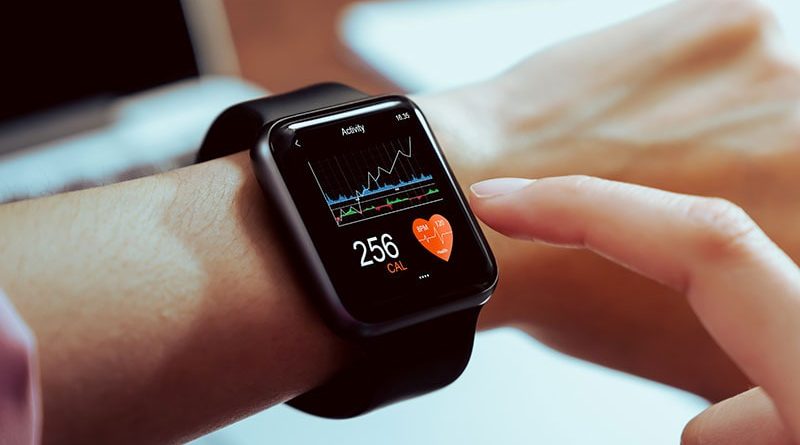Wearable Devices Show Promise in Monitoring MS
MILAN — A tool kit combining a wearable device with automated algorithms allows for the passive monitoring of disease parameters in people with multiple sclerosis and may even be able to predict the course of the disease, suggests a pilot study.
Twenty patients were enrolled, only half of whom correctly completed all of the assessments and wore the included smartwatch regularly. Importantly, the data reported back for analysis was in line with expectations, and the patient feedback was positive.
The tool kit “seems feasible and usable to remotely monitor multiple domains of health status in people with multiple sclerosis,” conclude Ludovico Pedullà, PhD, Italian Multiple Sclerosis Foundation, Genoa, Italy, and colleagues.
Further analysis of the dataset, including the artificial intelligence and machine-learning algorithms, may allow the prediction of “relevant changes throughout the course of multiple sclerosis” and anticipate the need for therapeutic interventions.
The findings were presented at the 9th Joint European Committee for Treatment and Research in Multiple Sclerosis-Americas Committee for Treatment and Research in Multiple Sclerosis (ECTRIMS-ACTRIMS) 2023.
Leveraging Big Data to Improve Outcomes
The authors note that the primary aim of the pan-European ALAMEDA project is to leverage “big data” through artificial intelligence and machine learning to provide “clinically actionable information” on patients with brain disorders that “complements medical recommendations” and thus improves treatment.
For the current pilot study, the researchers developed an integrated platform to collect patient-centered data from wearables and mobile devices using digital patient-reported outcomes (ePROs), with the aim of testing the resulting tool kit’s feasibility and usability in people with multiple sclerosis.
Pedullà told Medscape Medical News that they wanted to have “passive monitoring” of patients over the course of their daily lives and therefore searched for the best devices and the most relevant patient reported outcomes as well as used “innovative algorithms” to analyze the data to try to predict the disease course.
To reduce dropouts and increase adherence to the tool kit, they described the project to patients with multiple sclerosis and asked for their feedback to determine whether what they had designed was feasible from the patient perspective, Pedullà said.
This led to some changes in the way data were collected, and the team developed a social network channel so patients would be able to ask for support and stay engaged in the study.
Feasible With High Levels of Confidence
Twenty people with relapsing-remitting multiple sclerosis were enrolled, of whom, 14 were women. The mean age was 37.8 years, and the mean disease duration was 9.1 years. The mean Expanded Disability Status Scale was 2.2.
The participants were asked to use the tool kit for 1 year, with half reaching the 6-month milestone. Participants correctly completed 53% of the scheduled ePROs and regularly wore the smartwatch without reporting discomfort.
The team reports that the data from the tool kit “are in line with those reported in the literature.”
It showed that participants took an average of 8415 steps per day and completed 9.8 minutes of vigorous activity and 14.5 minutes of moderate activity daily. Daily sedentary minutes were 705.1.
Patients had a mean Perceived Deficit Questionnaire score of 25.2, a Beck Anxiety Inventory score of 17.3, a score on the 12-Item Multiple Sclerosis Walking Scale of 37.2, and an arm function on the Multiple Sclerosis Questionnaire of 47.4.
The mean Modified Fatigue Impact Scale score was 18.5, and the Pittsburgh Sleep Quality Index score was 25.2. The System Usability Scale revealed “high levels of confidence” with the tool kit, the team says, as well as “very high” intention of using it in the future.
Pedullà said that the researchers now want to evaluate the feasibility of the tool kit further by analyzing the adherence and usability data and target it to the patients who are most likely to use it.
They also want to determine not only whether the use of wearables in this way can predict relapse in multiple sclerosis but also disease progression, particularly as the current definitions are evolving.
Reducing Daily Step Count
Approached for comment, Riley M. Bove, MD, MSc, Assistant Professor, UCSF Weill Institute for Neurosciences, San Francisco, California, said that the study is “very interesting and in line with what has been previously published.”
She pointed to a recent study that she co-authored, in which remote monitoring via a continuous step counter revealed that a decreasing average daily step count was associated with the worsening of standard ambulatory measures.
“There are nice benefits of an integrated platform” such as that used in the current study, Bove noted, adding it is “even better if it can also send the data to clinicians.”
The ALAMEDA project has received funding from the European Union’s Horizon 20202 research and innovation program. No relevant financial relationships declared.
9th Joint European Committee for Treatment and Research in Multiple Sclerosis-Americas Committee for Treatment and Research in Multiple Sclerosis (ECTRIMS-ACTRIMS) 2023: Abstract P1456. Presented October 11, 2023.
For more Medscape Neurology news, join us on Facebook and X
Source: Read Full Article
